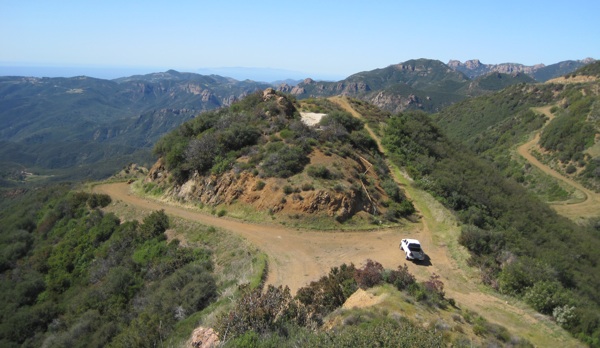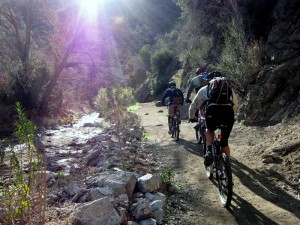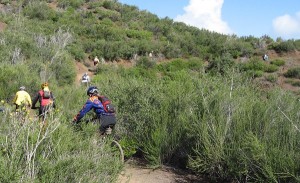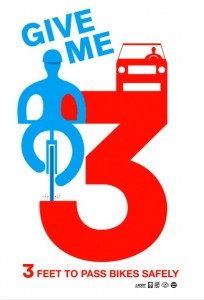On November 7, 2011, President Obama signed into law the Ski Area Recreational Opportunity Enhancement Act of 2011 (S. 382/H.R. 765). A version of this legislation was first introduced by Senator Mark Udall (D-Colorado) in 2008, and again in 2010. The bill was re-introduced in February 2011, and this year passed both the House and Senate. It has strong support from both the mountain bike community and the Ski industry. IMBA testified in favor of the act earlier this year and has signed a formal Memorandum of Understanding with the National Ski Area Association to help increase visitation and improve summer mountain bike experiences at U.S. ski areas.
The Act amends the National Forest Ski Area Permit Act of 1986 and clarifies the authority of the Secretary of Agriculture to “permit appropriate additional seasonal or year-round recreational activities and facilities on National Forest System land subject to Ski Area permits.” The act goes on to specifically mention mountain bike terrain parks and trails, zip lines, frisbee golf courses and ropes courses as acceptable additional recreational activities for ski areas. It excludes activities such as tennis courts, water slides, swimming pools and golf courses.
This should make it easier for ski areas to get the required permits to operate mountain bike parks during their summer off-season. Year-round recreation at ski resorts is expected to create additional jobs and increase local commerce. Ski areas must still comply with environmental regulations when operating year-round, and their primary function has to remain snow sports.
In the Angeles National Forest there are four ski areas: Mountain High (East, West & North), Mt. Waterman, Ski Sunrise and Mt. Baldy. For a few short weeks in 2009 Mt. Waterman opened to bicycles in the summer, but was forced to abandon its mountain bike park plans because of the limitations of their ski area permit. The passage of HR 765 now allows the Secretary of Agriculture to issue permits for mountain bike parks to existing ski area permit holders.
This is a great step forward and one that will hopefully increase our opportunities for lift-access trails and bike parks in the years to come.










The Startle Factor
Tuesday, November 1st, 2011By Mark Langton
I was going to write an article about perception vs. reality relating to how different trail users perceive others on the trail: For example, I may be riding my bike at 15 mph, a relatively modest speed, but someone walking might think it’s way too fast. But a recent email sent to us more than illustrates this concept:
Dear CORBA,
I sometimes walk my big dog on fire roads also used by mountain bikers. I try to pay attention as to the whereabouts of the bikers so that I can pull my dog aside, but I’m often distracted. I’ve had a number of near-misses and one bad accident. A biker came around a bend very fast, could clearly see my back and the face of my big dog. I didn’t hear him coming. My dog lunged at him, which slammed me into the ground, and she dragged me as she tried to chase him. I screamed. Did the biker stop, turn around, show concern? No. He kept going.
Tracy Sulkin
Here was my response:
Hi Tracy,
Sorry to hear about your incident. It is troubling to hear that the rider did not come to your assistance, and as a human being I am disappointed he did not show more concern.
Yes, CORBA does try to educate riders about situations like the one you describe. Unfortunately, there is no way for us to control or educate everyone, nor can we install common sense and courtesy.
Your experience points out that we all need to be aware of things that could potentially be dangerous out on the trails.
Sincerely,
Mark Langton
You may have responded differently, but the bottom line is, different people react differently to different situations, and we all should treat each other with as much respect as we would expect from others.
Tags:CORBA, Public Comments
Posted in Advocacy | Comments Closed